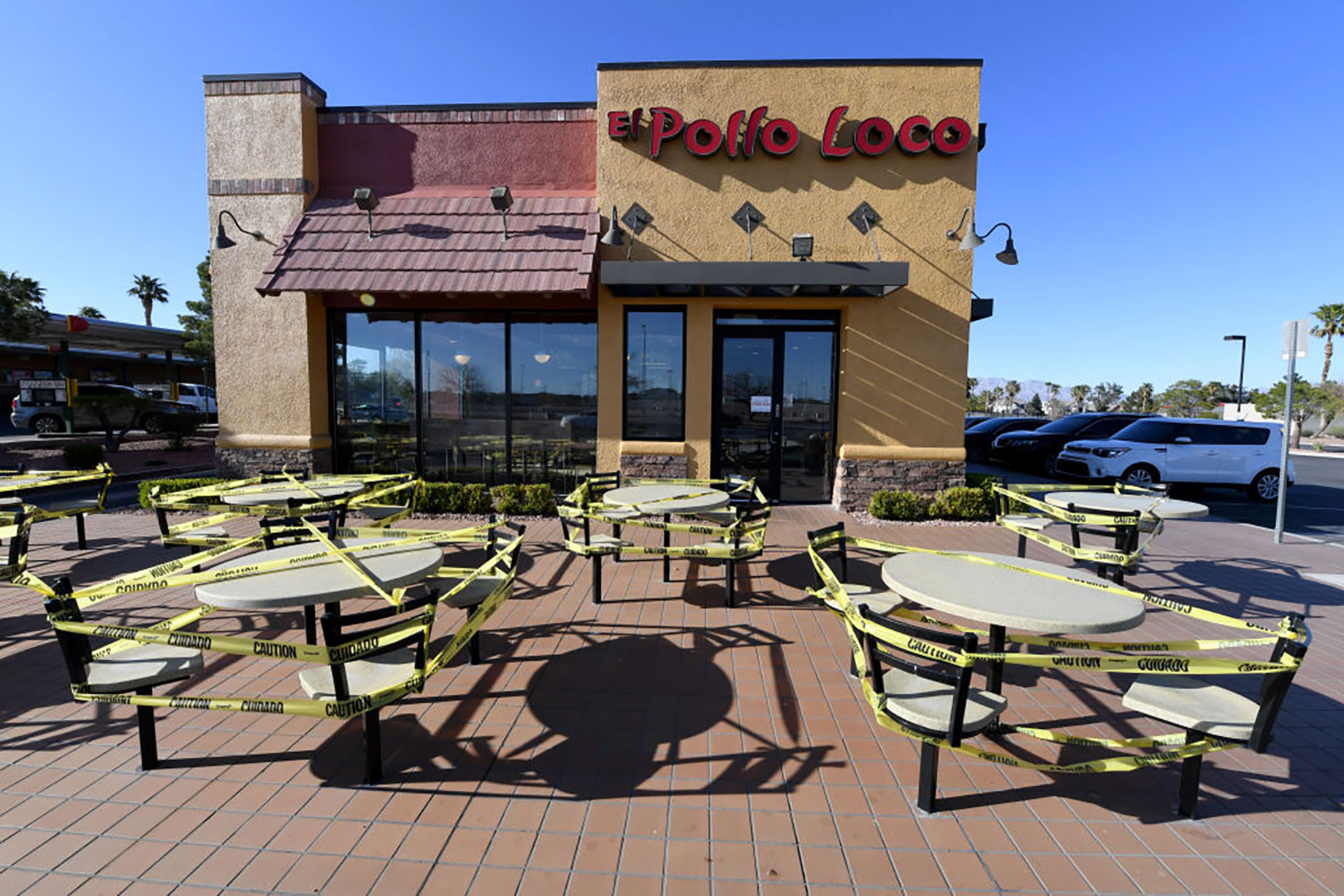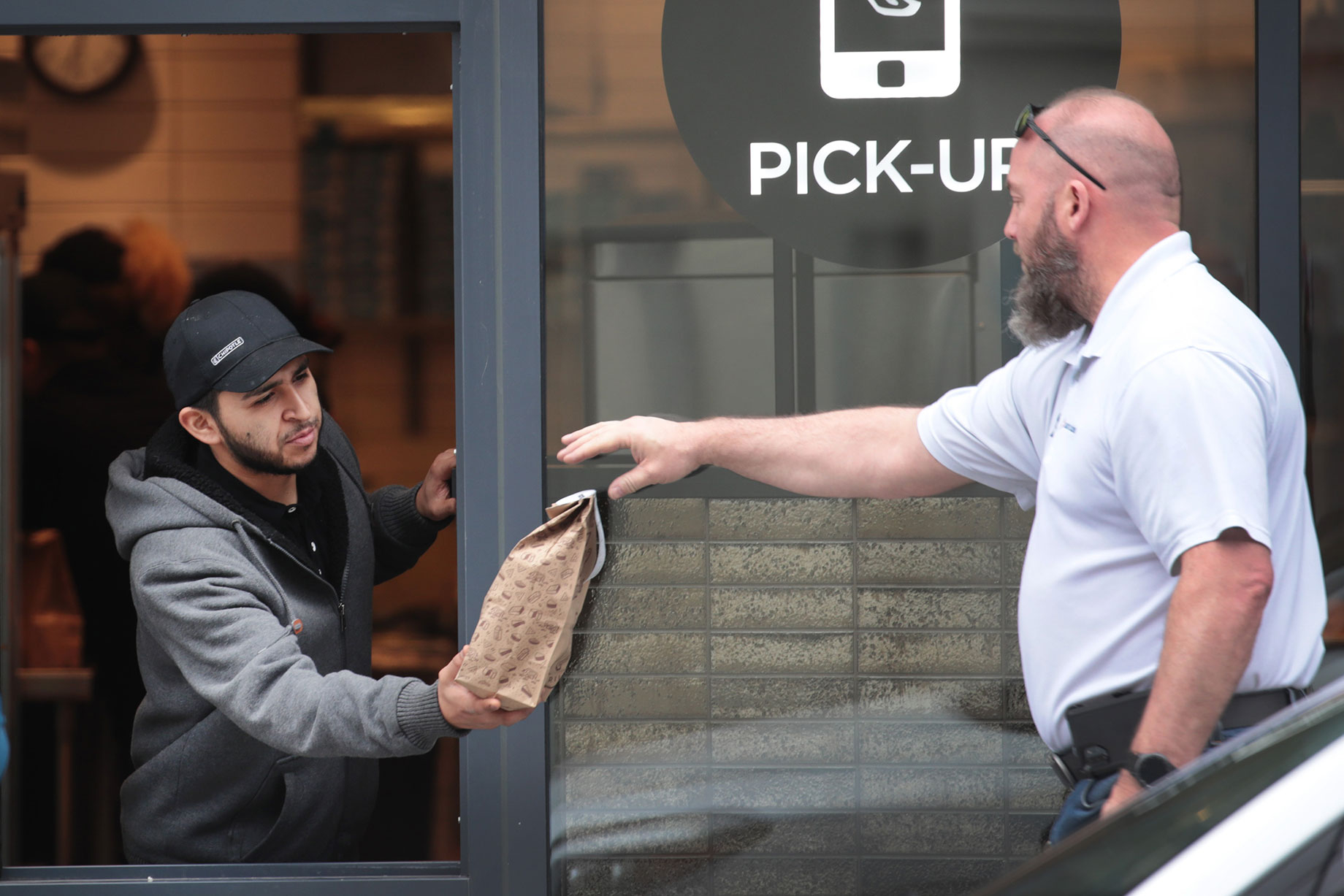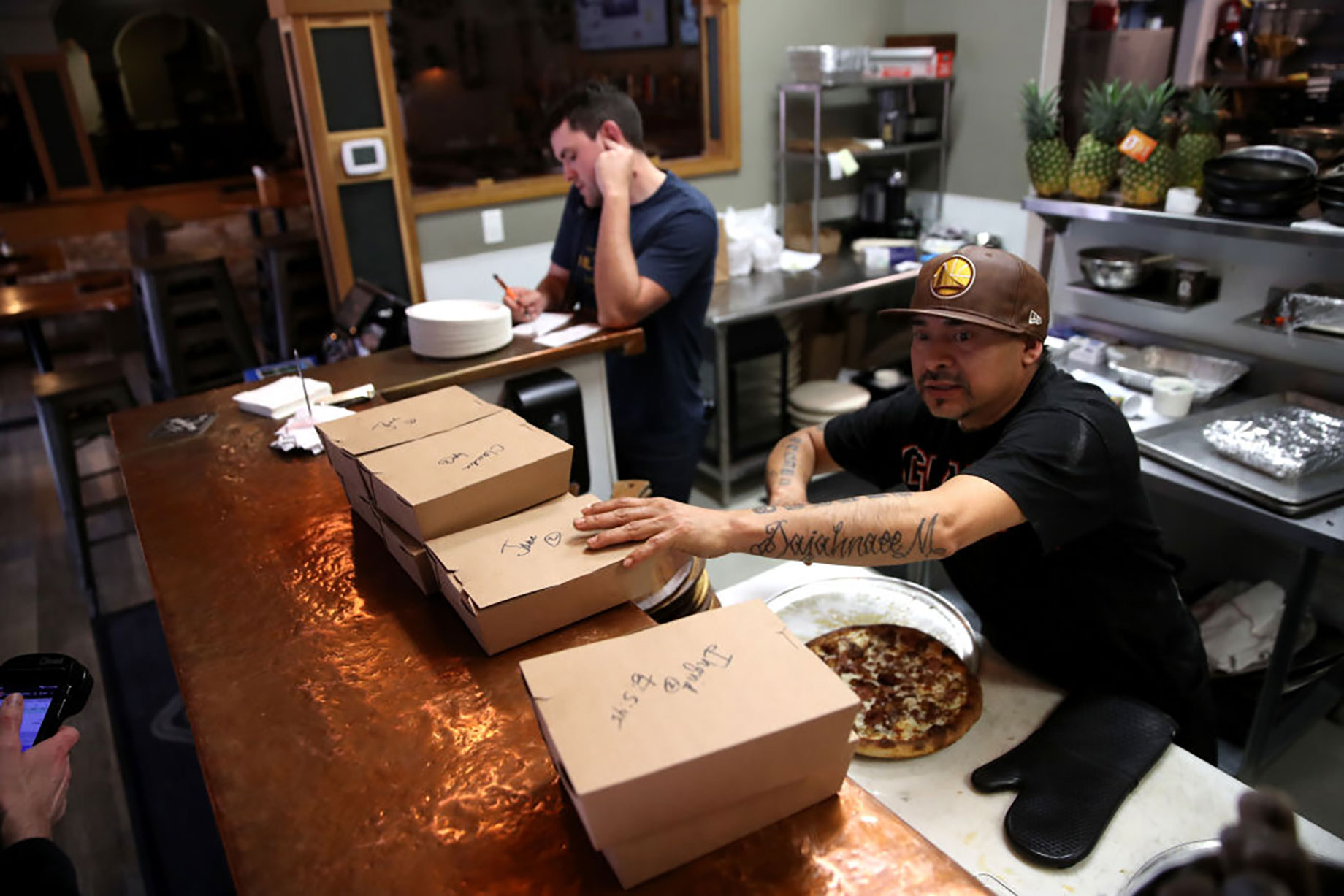The COVID-19 crisis is decimating the restaurant sector, Creditntell researchers said on a Colliers International-sponsored webinar titled COVID-19 Impact on Restaurant Sector.

Tables and chairs in front of an El Pollo Loco in Las Vegas are blocked off as a result of COVID-19. Restaurants in Nevada are limited to takeout and delivery service owing to a stay-at-home order from Governor Steve Sisolak. He also has ordered the closure of nonessential businesses through April 30th
As of March 22, 44 percent of U.S. restaurant units had closed temporarily, according to the National Restaurant Association. About 3 percent, or 30,000 restaurant units, had closed permanently as a result of the crisis.
Even the strongest operators are relying on revolving credit, employee furloughs and rent reductions to reach the other side of the pandemic, which they hope will come by mid-May, said Tyler Ricketts, assistant vice president of F&D Reports for Creditntell. “The longer this goes on, the more restaurants are going to fold,” he said. Meanwhile those that survive will be saddled with debt and staring down a likely recession, he added.
Quick-service restaurant sales are down at least 20 percent year over year through March 22, as everyday opportunities for people to stop by restaurants are drying up, said Alan Lee, senior analyst for F&D Reports: “People are driving and traveling less. Public spaces are closed. Major events have been canceled. Office workers are not going out to lunch. People are going to grocery stores. They’re stocking up.”
Within 30 days, 11 percent of the restaurant operators the National Restaurant Association surveyed in late March may have to close permanently, though operators are doing everything they can to buy time, including revolver borrowing. McDonald’s borrowed $1 billion, Yum Brands $525 million, Texas Roadhouse $190 million and Shake Shack $50 million. The Cheesecake Factory has furloughed 91 percent of its workforce. “Most operators are only retaining managers and enough hourly workers to handle takeout,” Lee said. The company also says it will stop opening new locations and won’t pay April rent.

A Chicago Chipotle worker serves customers through a window. Illinois Governor JB Pritzker has ordered all restaurants and bars in the state closed except for carry-out and delivery orders
Most restaurants have been forced to close their dining rooms, simplify menus and rely on takeout and delivery services, he said. For operators that rely on off-premise dining and delivery — such as Domino’s, Papa John’s and Pizza Hut —sales are surging, and they’re hiring tens of thousands of employees. Meanwhile higher-end concepts that traditionally have relied on sit-down dining are struggling. J. Alexander’s Restaurant, for example, expects its carryout business will generate only 10 to 20 percent of historical sales, Lee said.
Government help is on the way in the form of the CARES Act, and experts expect more legislation to add more stimulus dollars, Lee said. And franchisors are taking steps to help. Yum Brands is pausing requirements for franchisees to remodel and open new locations through 2020. It’s also providing grace periods for royalties and ad-fund payments. Subway is reducing royalty payments from 8 percent to 4 percent for one week and suspending ad-fund payments for four weeks. McDonald’s is considering rent deferrals for franchisees.

A worker prepares to-go orders at Creekside Pizza & Taproom, in San Anselmo, California
Third-party delivery services are stepping up, as well. Grubhub is deferring marketing commissions for new, independent restaurants for a few weeks. DoorDash is taking no commissions on pickup orders for existing restaurants and no commissions for 30 days for new, independent restaurants that sign up. And Postmates is deferring fees for independent restaurants. Such services typically charged as much as 30 percent to deliver food before the pandemic.
Even with all this help, surviving restaurant operators will face a slog to get back to pre-pandemic prospects, Lee said. Permanent changes in consumer behavior, including telecommuting and decreased corporate travel, also could hurt sales. “Down the line, people will see there’s no rush for food,” Lee said. “Once they’ve eaten through the panic buying they’ve done, they may reconsider going back to restaurants. But in the meantime, these restaurants are going to have to deal with a fraction of the volumes that they normally see.”
By Brannon Boswell
Executive Editor, Commerce + Communities Today


